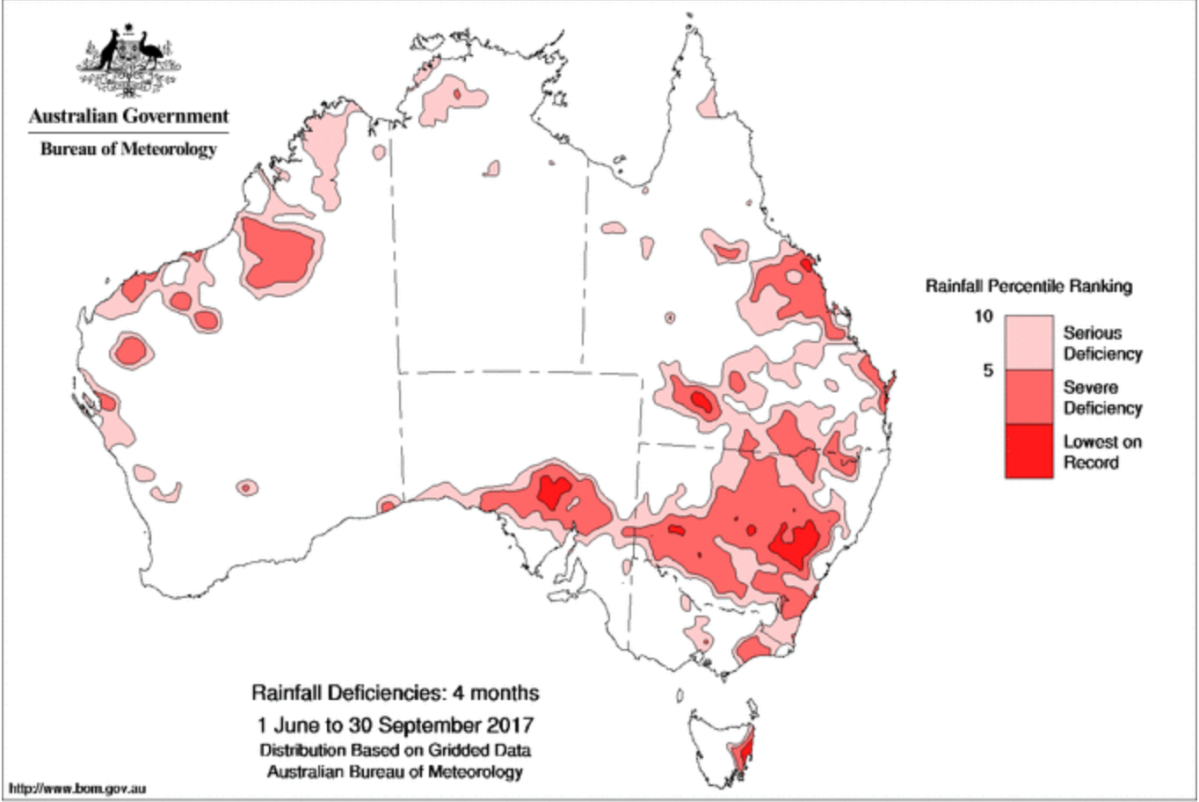Crops threatened by dry September
Some of the Australia’s prime agricultural regions have reported record low September rainfall, threatening an already downgraded estimate for crop production.

Farmers on Yorke and Eyre peninsulas are looking for late rains. File image
During the past four months there have been serious to severe deficiencies across a large area of southern South Australia, the majority of NSW, southern and coastal parts of Queensland, eastern Victoria, and eastern Tasmania.
September rainfall in the Murray-Darling Basin, regarded as the nation’s food bowl, was the lowest on record, the Bureau of Meteorology said in its latest drought statement today.
Rainfall was very much below average – ranked in the lowest 10 per cent of records – for a large area of the mainland’s southeast.
For NSW as a whole September rainfall was the lowest on record, while for Queensland it was the tenth-driest September since records began in 1900.
Rainfall deficiencies have increased in both extent and severity across eastern Australia at the four- and seven-month timescales, most notably in NSW and the southern third of Queensland.
Lower-layer soil moisture for September was below average across most of SA, Victoria, NSW and Queensland, the south of the Northern Territory, eastern Tasmania, and areas of southern WA.
Dry conditions were exacerbated by exceptionally warm temperatures across most of the continent in September, following the warmest winter on record.
Forecast models indicate good rain for many areas is off the radar until December, endangering summer crop production as well as the spring-summer harvest.

Dry conditions and late frosts wiped out many winter crops forcing the federal government’s agricultural forecaster ABARES to estimate the harvest this season will be nearly 40 per cent down on 2016-2017.
Wheat production is forecast to decrease by 38 per cent to 21.6 million tonnes, barley by 40 per cent to 8 million tonnes and canola by 33 per cent to 2.8 million tonnes.
But those forecasts would only be achieved if spring rainfall was sufficient and timely, especially in central west NSW and the Eyre and Yorke peninsulas in South Australia, ABARES said.
– AAP




